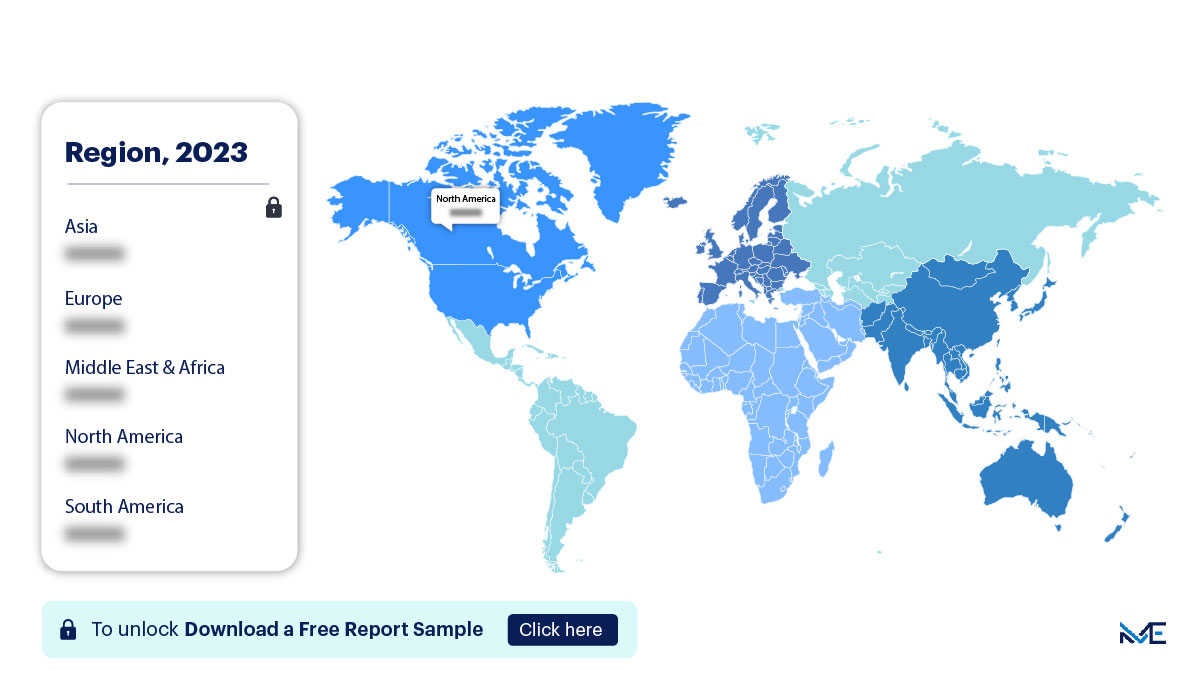
Cloud Native Platforms Market Analysis By Application (Enterprise IT, Web-Based and Internet-Driven Applications, Data Analytics, Others), By Type (Containers, Orchestration, Microservices, Serverless Computing, Others), and By Region Forecast to 2032
- Report ID: ME_00132403
- Format: Electronic (PDF)
- Publish Type: Publish
- Number of Pages: 250
Market Snapshot
| Study Period | 2019-2032 |
| Base Year | 2023 |
| Forcast Year | 2023-2032 |
| CAGR | 6.34 |


Gain accurate insights regarding the negative impacts of COVID-19 on all markets and industries
Download Sample PdfReport Overview
The Cloud Native Platforms Market size is estimated to grow at a CAGR of 41.35% between 2023 and 2032. The growth of the market depends on several factors, including the increasing adoption of cloud-native technologies by enterprises, the demand for scalable and agile application development, and the need for efficient resource utilization. Cloud-native platforms provide a flexible and efficient approach to application development and deployment, enabling organizations to build, scale, and manage applications with greater speed and resilience.
Cloud Native Platforms Market Overview:
Drivers:
One of the key drivers of the Cloud Native Platforms Market is the growing adoption of cloud-native technologies by enterprises. As organizations seek to modernize their IT infrastructure and applications, cloud-native technologies offer a compelling solution. Cloud-native development allows for faster development cycles, improved scalability, and enhanced reliability. This, in turn, supports digital transformation efforts and provides a competitive edge.
The demand for scalable and agile application development is also fueling market growth. In a rapidly changing business landscape, organizations need to develop and deploy applications quickly to meet evolving customer demands. Cloud-native platforms, with their containerization, orchestration, and microservices capabilities, enable agile development practices.
Trends:
A key trend in the Cloud Native Platforms Market is the increasing adoption of containerization. Containers, such as Docker, have gained popularity for their ability to package applications and their dependencies into a single unit that can run consistently across different environments. This portability and consistency are driving their use in building, shipping, and running cloud-native applications.
Microservices architecture is another significant trend. Organizations are decomposing monolithic applications into smaller, independently deployable microservices. This approach enhances scalability, fault tolerance, and development agility. Cloud-native platforms provide the tools needed to build and manage microservices-based applications.
Restraints:
One of the challenges in the Cloud Native Platforms Market is the complexity of managing containerized applications at scale. As the number of containers grows, so does the need for efficient orchestration and management. Organizations may face difficulties in optimizing resource utilization, ensuring security, and monitoring containerized workloads effectively.
Security concerns also present a restraint. Cloud-native platforms introduce new security challenges, particularly in the context of containerized applications. Ensuring the security of containers and their orchestration environments requires specialized expertise and tools.
Cloud Native Platforms Market Segmentation By Application:
The enterprise IT and web-based and internet-driven applications segments are estimated to witness significant growth during the forecast period within the Cloud Native Platforms Market. Enterprise IT departments are increasingly adopting cloud-native platforms to modernize their infrastructure and applications. These platforms enable organizations to build and run applications more efficiently, reducing costs and improving agility.
Web-based and internet-driven applications, including e-commerce platforms, social media networks, and content delivery services, benefit from cloud-native approaches. The ability to scale dynamically in response to user demand is crucial for these applications, and cloud-native technologies provide the necessary flexibility.
Data analytics and other applications are also leveraging cloud-native platforms to process and analyze large volumes of data efficiently.
Cloud Native Platforms Market Segmentation By Type:
Containers, orchestration, and microservices are among the types of cloud-native technologies contributing to the growth of the Cloud Native Platforms Market. Containers provide a standardized and portable way to package applications and their dependencies. Orchestration tools, such as Kubernetes, simplify the management of containerized workloads, ensuring they run reliably and efficiently.
Microservices architecture, with its focus on breaking down applications into small, independently deployable services, is a core component of cloud-native development. Serverless computing, which abstracts infrastructure management, is also gaining traction for its simplicity and cost-effectiveness.
Regional Overview:

Download the report summary now!
Request pdf Sample
North America and Europe are expected to be significant contributors to the Cloud Native Platforms Market during the forecast period. These regions have a high concentration of technology companies and enterprises looking to modernize their IT infrastructure. Additionally, a robust ecosystem of cloud-native platform providers, consulting firms, and development tools exists in these regions.
Asia-Pacific is also growing in importance, with increasing cloud adoption and digital transformation initiatives across industries. The need for scalable and agile application development is driving the adoption of cloud-native platforms in the region.
Cloud Native Platforms Market Customer Landscape:
The Cloud Native Platforms Market serves a diverse customer base, including enterprises of all sizes, cloud service providers, software developers, and IT professionals. Enterprises seek cloud-native solutions to enhance their digital capabilities, while cloud service providers offer cloud-native platforms as part of their service offerings.
Software developers and IT professionals play a crucial role in implementing and managing cloud-native technologies. Their expertise is essential for successfully adopting and leveraging cloud-native platforms.
Major Cloud Native Platforms Market Companies:
Companies in the Cloud Native Platforms industry are at the forefront of enabling cloud-native application development and deployment. Some major companies operating in this market include:
- Amazon Web Services, Inc.
- Microsoft Corporation
- Google LLC
- IBM Corporation
- Red Hat, Inc. (a subsidiary of IBM)
- Docker, Inc.
- Kubernetes (maintained by the Cloud Native Computing Foundation)
- VMware, Inc.
- Pivotal Software, Inc. (a subsidiary of VMware)
- Oracle Corporation
These companies provide cloud-native platform solutions, including containerization, orchestration, and microservices tools, to help organizations transform their application development and deployment processes.
Segment Overview:
The Cloud Native Platforms Market report provides revenue forecasts at the global, regional, and country levels, along with an analysis of trends and growth opportunities from 2019 to 2032.
Application Outlook (USD Million, 2019 - 2032):
- Enterprise IT
- Web-Based and Internet-Driven Applications
- Data Analytics
- Others
Type Outlook (USD Million, 2019 - 2032):
- Containers
- Orchestration
- Microservices
- Serverless Computing
- Others
Geography Outlook (USD Million, 2019 - 2032):
- North America
- The U.S.
- Canada
- Europe
- U.K.
- Germany
- France
- Rest of Europe
- APAC
- China
- India
- South America
- Brazil
- Argentina
- Chile
- Middle East & Africa
- Saudi Arabia
- South Africa
- Rest of the Middle East & Africa
RESEARCH METHODOLOGY
A research methodology is a systematic approach for assessing or conducting a market study. Researchers tend to draw on a variety of both qualitative and quantitative study methods, inclusive of investigations, survey, secondary data and market observation.
Such plans can focus on classifying the products offered by leading market players or simply use statistical models to interpret observations or test hypotheses. While some methods aim for a detailed description of the factors behind an observation, others present the context of the current market scenario.
Now let’s take a closer look at the research methods here.
Secondary Research Model
Extensive data is obtained and cumulated on a substantial basis during the inception phase of the research process. The data accumulated is consistently filtered through validation from the in-house database, paid sources as well reputable industry magazines. A robust research study requires an understanding of the overall value chain. Annual reports and financials of industry players are studied thoroughly to have a comprehensive idea of the market taxonomy.
Primary Insights
Post conglomeration of the data obtained through secondary research; a validation process is initiated to verify the numbers or figures. This process is usually performed by having a detailed discussion with the industry experts.
However, we do not restrict our primary interviews only to the industry leaders. Our team covers the entire value chain while verifying the data. A significant number of raw material suppliers, local manufacturers, distributors, and stakeholders are interviewed to make our findings authentic. The current trends which include the drivers, restraints, and opportunities are also derived through the primary research process.
Market Estimation
The market estimation is conducted by analyzing the data collected through both secondary and primary research. This process involves market breakdown, bottom-up and top- down approach.
Moreover, while forecasting the market a comprehensive statistical time series model is designed for each market. Macroeconomic indicators are considered to understand the current trends of the market. Each data point is verified by the process of data triangulation method to arrive at the final market estimates.
Final Presentation
The penultimate process results in a holistic research report. The study equips key industry players to undertake significant strategic decisions through the findings. The report encompasses detailed market information. Graphical representations of the current market trends are also made available in order to make the study highly comprehensible for the reader.
Personalized Business Report Tailored to Your Requirements
- Our expert analysts collaborate directly with you to comprehend your specific needs.
- Get data on regions, segments, competitors, and vendors of your choice.
- Information is presented in alignment with your exact preferences and formatting.
Free Sample Report
"Find new revenue generation opportunities"
